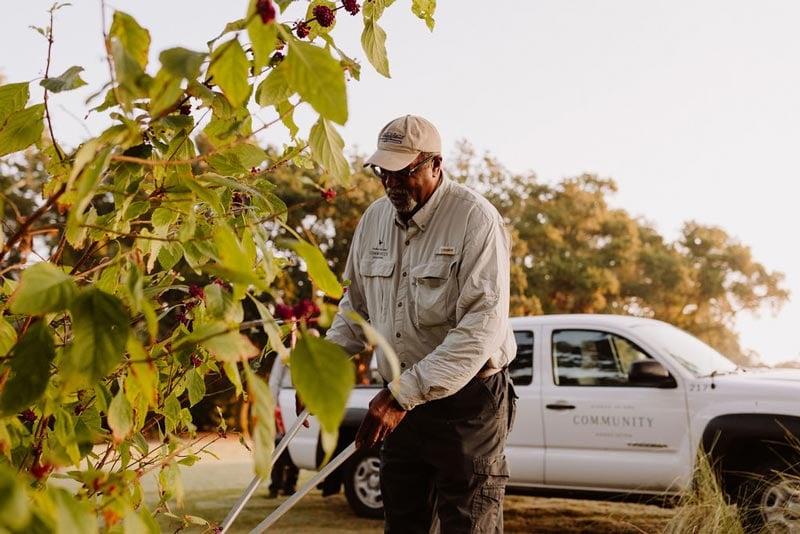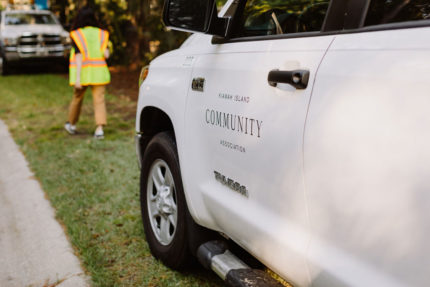Aug
25
2007
From The Blog
Evolution Of Family Recreation, Part 2: The Nature of Kiawah, Then and Now
The Kuwaiti-owned Kiawah Island Company’s master plan always included recreation with a strong emphasis on nature. One of the key elements of the Kuwaiti design for Kiawah was the system of bike and walking trails. The bike shop was under the recreation division’s jurisdiction, and biking was always an important part of the recreation function. In 1978, Kamp Kiawah began operating out of West Beach, with many camp activities taking advantage of Kiawah’s natural environment. The 21-acre Night Heron Park opened in 1981, providing Kiawah Island Community Association (association) members and resort guests with structured outdoor recreation facilities. At that time, a dedicated park in the middle of a resort was progressive and atypical.
In 1984, Dylan Jones became the Kiawah recreation director. By this point, the development of Kiawah was in full swing, with strong property sales, two golf courses and increasing renown. The Kiawah Island Company hired Dylan to oversee expanded regular activities and arrange special events as a tool to attracting real estate sales.
However, the Kuwait venture lasted only three more years. Dylan stayed for nearly 23 years. To Dylan, the bike path system was essential to affording people an appreciation of Kiawah. He considers the paths “an astute move that opened up the world of Kiawah to everybody.” He would have liked everyone who came to Kiawah to observe and experience the island by bike or by roller skates. His staff conducted skating demos and guided nature explorations on skates. However, the skating initiative was short-lived. These were the “old-fashioned” skates, not today’s in-line type, and “the pathways were inviting but not designed for skating,” Dylan explains. People moved onto the streets, a traffic problem ensued, and the skating experiment ended.
In the 1980s and into the ‘90s, interpretive signage on the trails was abundant. Dylan credits the resort’s first general manager, Frank Brumley, and particularly his wife Blanche Brumley for these signs, which encouraged people to ponder the Kiawah environment. Unfortunately, over the last 15 years, many of the signs have been victimized by vandalism and theft.
Throughout the 1980s, popular jeep tours to the as-yet undeveloped east end of the island provided a fascinating educational view of the tropical barrier island environment. Near the conclusion of the tour, the jeeps emerged from jungle-like surroundings onto a stunningly vast white beach on which no signs of civilization were evident. These tours came to an end with the construction of the Ocean Course in 1991 and the development of Flyway Drive. However, their termination jump-started the Kiawah nature programs.
Dylan viewed the demise of the jeep tours as an opportunity to broaden the scope of Kiawah recreation programs and focus on nature. His objective was for people to “experience the island by foot, bike and water,” and to see what Kiawah offered beyond beach, pools and golf. He envisioned offering an array of programs that would appeal to residents, non-resident owners and resort guests. In 1992, with four summertime nature staffers and a few summer programs underway (including island bike, canoe and walking tours, ocean seining, and a teen scavenger hunt by bike) Dylan decided to add a naturalist to the staff for autumn.
Liz King had recently finished her Masters degree in biology and followed her younger brother, a student working part-time in the restaurant at Night Heron, to Charleston from New Jersey. Intrigued by Kiawah, she replied to Dylan’s newspaper ad for a 3-month naturalist to work from September through Thanksgiving. Her “interview” included conducting a canoe tour, accompanied by Dylan, who watched to see how she handled herself, interacted with customers and projected her voice. Liz shared her canoe with her visiting mother, and as Liz was conducting the tour, her mother steered ineptly from the back of the canoe, much to Liz’s dismay and concern. She snared the job anyway.
Liz loved Kiawah from the moment she arrived, and she has since never left. She filled the seasonal down times with odd jobs until she could work again as a naturalist, and she and another staff member created programs to help them justify their naturalist jobs. In spring 1993, Dylan hired Jim Koenig to be the director of the first Nature Center, which opened in a former storage area of the Night Heron Bike Shop. It provided the Kiawah community with an educational center that offered information and examples of local flora and fauna. In the spring of 1994, they introduced the first Nature Symposium.
Later that year, after only two years on Kiawah, Liz became nature program manager and director of the nature center, a job she held until Dylan relocated earlier this year and she replaced him. Her goal today is to make appreciation of nature as important to Kiawah as appreciation of golf.
Dylan and Liz shepherded the Kiawah nature program through 15 years of explosive growth. Fortunately, resort management was willing to subsidize the program through years of deficits and to keep the nature program in-house. Every year, Liz has added new programs and more full-time staff. This summer, the nature program includes dozens of appealing offerings and a staff of over 20 naturalists, two-thirds of who are returning from previous years. The growth has been fueled partly by the accommodations tax, which enabled the resort to expand and improve the quality of night-time events. Fees for bike rentals and tours and activities have helped to fund the expanded and improved nature center, which moved to its current location at Night Heron in the late 1990s. Fees have also risen as swiftly as the nature programs have grown. The canoe tour Liz conducted in 1992 cost $19; this summer, multiple options for paddle tours are $55. But one feature has not changed; applicants for naturalist positions still conduct paddle tours to prove themselves.
The resort’s nature program serves more than the human members of the Kiawah community. Animal rehabilitation is also a part of the program. Before the nature center opened, untrained association personnel and volunteers did their best with injured animals. Now naturalists handle the animal rescue operation, and recovering animals can be housed in the nature center.
Liz’s favorite part of her job was snake rescue. “Of all the Kiawah wildlife,” she notes, “a snake is the least likely to bite.” She recalls the time a yellow rat snake crawled onto the second story balcony of a rental unit. The occupant of the lower unit called association security for help, and several patrols responded. The upper unit was unoccupied except for a dog, so security personnel were reluctant to enter the unit. They called Liz for help. She took a look at the snake, walked to the building and put her arm up toward the balcony. The non-venomous yellow rat snake, harmlessly crawled down her arm.
This past spring, Kiawah nature hit the national stage when a series of programs for “Spring Watch USA” were filmed on Kiawah for Discovery Channel’s Animal Planet. Ten days after Liz replaced Dylan and became director of outdoor programs, the Discovery Channel ensnared her, and she could do little else for two months. It became a major community event, involving all the naturalists on staff, the association, the town, and many island residents, as well as Liz’s two children, ages eight and six. Animal Planet shows are produced by outside production companies, and although a top company was hired for the Kiawah “Spring Watch,” this was their first foray into natural history. They had no idea what to expect and how random wildlife sightings can be. Community input was crucial to the highly successful series.
More than twenty years after Dylan came to Kiawah, his early vision, that nature programs should serve all constituents of the Kiawah community, is still a crucial guide. The nature center is a vital resource for everyone. The resort runs the center and most nature activities; many are free, and for those with a fee, association members and resort guests are charged the same amount. Both the resort and the association offer the popular paddle tours, the association tours depart from Cinder Creek and Rhett’s Bluff, and the resort from Mingo Point. Association members and staff run or participate in many other nature-oriented programs, such as the town Wildlife Committee, the Turtle Patrol, and gator counts. Recently, lakes staff filmed a mother alligator giving birth, then carried the hatchlings to the pond (see it on the Web at www.kiawah-owners.org/Lakes-AlligatorVideos.htm).
Successful programs are rarely without problems, and Kiawah’s nature program is no exception. The major problem Kiawah faces is that the truly wild places are disappearing. Cougar Island is the only portion remaining where people can view a marsh without also viewing houses, wooden bridges or golf carts. Wooded areas of the island are rarely free of traffic and construction noise, even in the Preserve. “Spring Watch” had to move film crews as often as six times a day to avoid noise. Liz King’s dream is to see Cougar Island be carefully developed so that nature education programs can continue, and so that people can see a bobcat, a mink and an otter all while experiencing the sounds of nature.
For a complete listing of nature programs, pick up a resort program guide at the Nature Center, check online at www.kiawahresort.com/ recreation, or visit the Sandcastle Community Center in person or on the Web at www.kiawah-owners.org/porc.htm.

